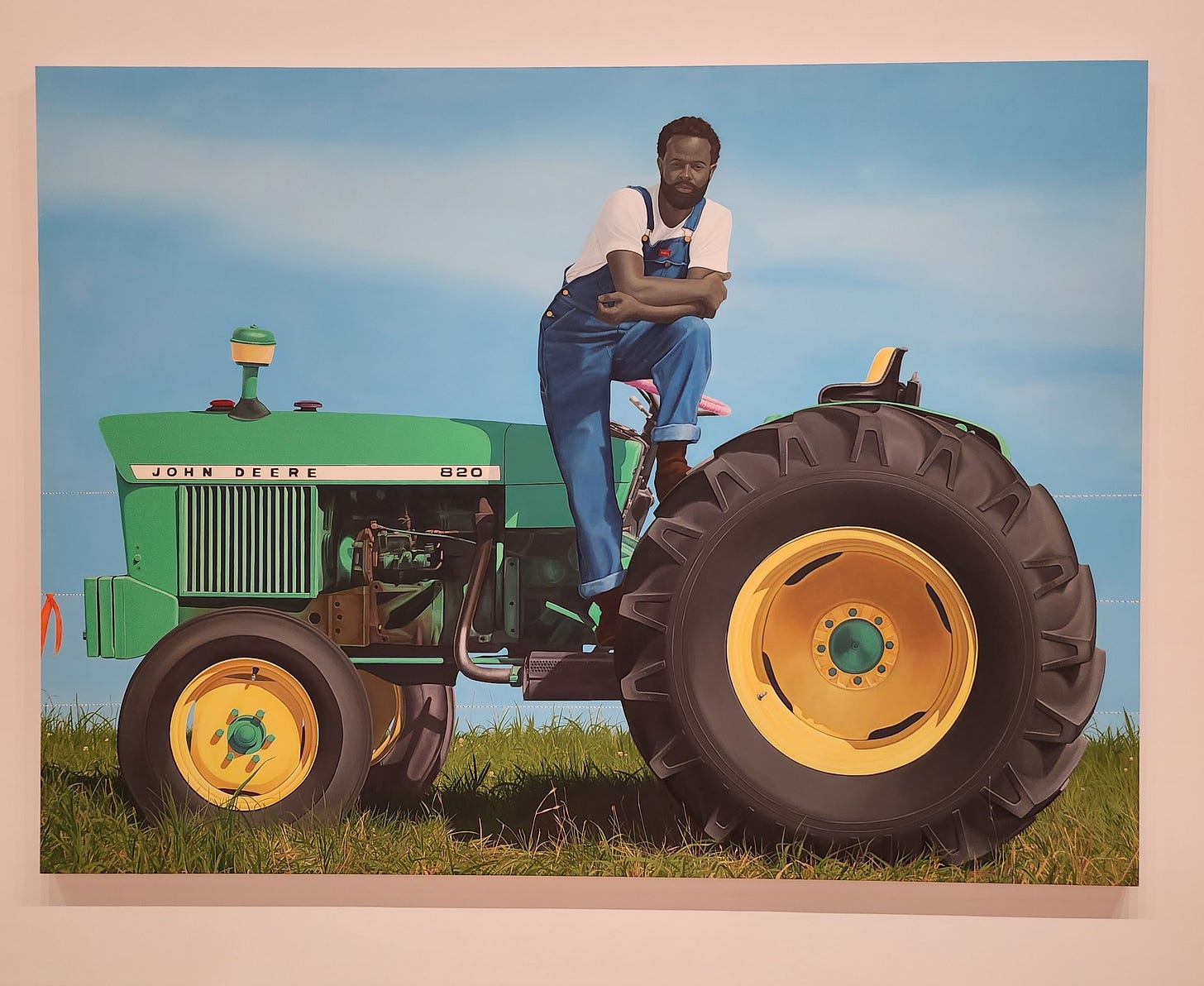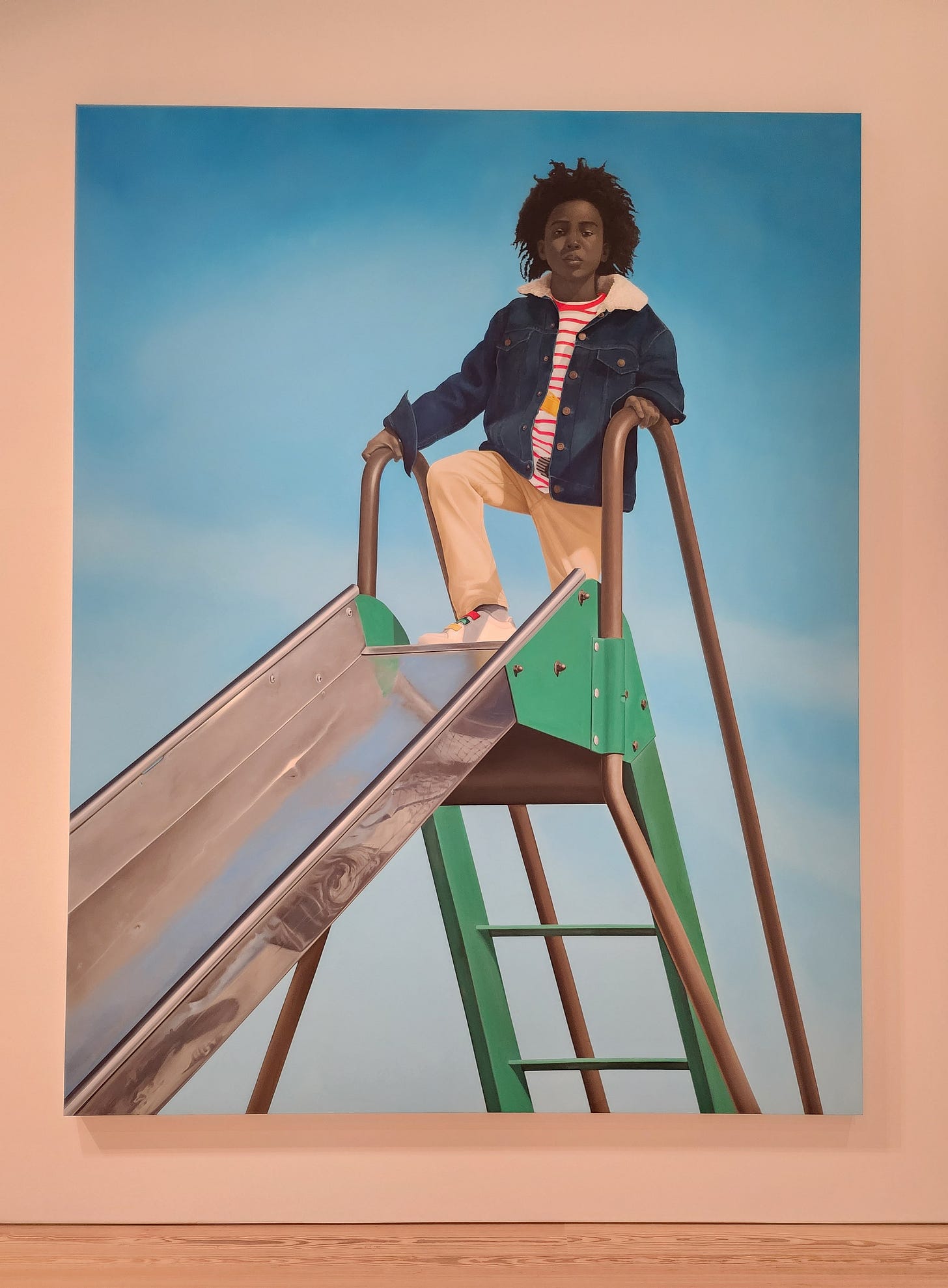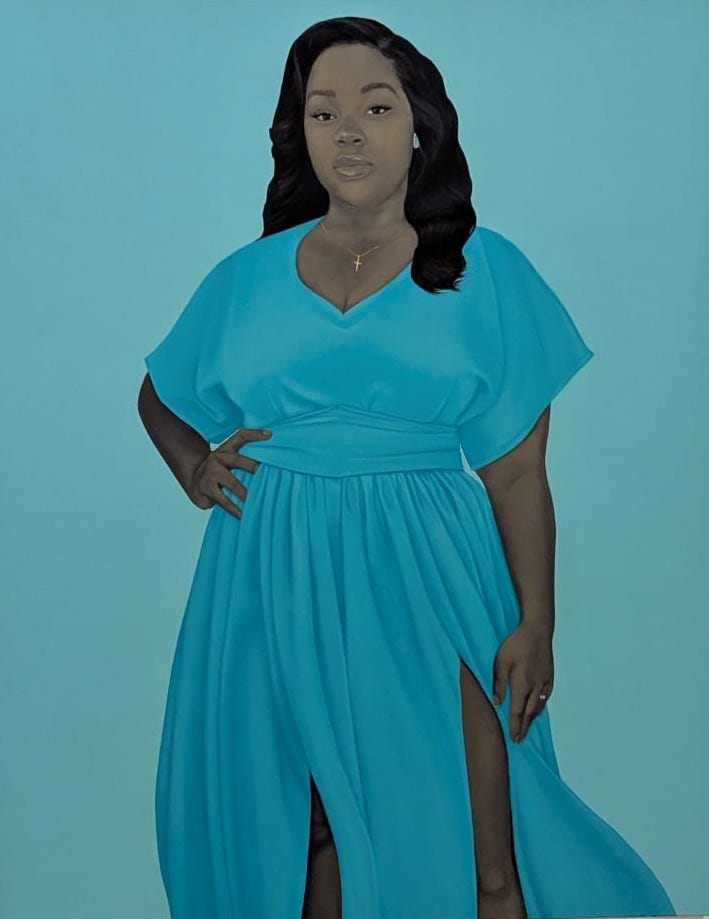Amy Sherald: American Sublime
Her paintings elevate us to a higher degree of moral and spiritual purity
The portraits of Amy Sherald are very recognizable, ever since she “burst” on to the art scene when she was tapped to create the formal portrait of former first lady, Michelle Obama. In truth, Sherald had been painting for a long time, but as the art world turns, once you’re chosen for something as high-profile as the portrait of a former first lady, suddenly everyone knows your name.
Skin rendered with underlying gray tones (as are all of the paintings in the exhibit in “Amy Sherald: American Sublime” at The Whitney Museum of America Art), the gorgeous painting of Mrs. Obama gets its own room. It’s quite breath-taking and very moving, but you’ve all seen that painting, and I want to talk about many others you may not have seen.
While many of the portraits in the exhibit are structured similarly to Mrs. Obama’s with a person or two with no (or nominal props), two of my favorites, which are both from 2022, feature large metal objects that take up a lot of the canvas, without any minimization of the people who appear in the paintings. One, “A God Blessed Land (Empire of Dirt),” appears on the cover of the exhibition book. A man in overalls sits atop his John Deere tractor, and like many of Sherald’s subjects, looks the viewer directly in the eye. The title of the work has multiple meanings, and while we don’t personally know the subject, we get it, and we get what a great painting this is.
The other metal object work, “Kingdom” features a young boy at the top of a slide. What I really liked and admired were the photorealistic gleam of the metal sides of the slide, and the use of the inherent triangle shape that seems to harken back to the important role of triangles as a compositional element in the Renaissance.
During that time, as artists began to further explore the science of optics and geometry to create more lifelike and spatially coherent images, triangles became a key element. The viewer's line of sight forms a visual cone, from the base to the apex. Many artists like Leonardo da Vinci employed triangular compositions for both aesthetic balance and psychological focus, like when he placed key figures (like Christ in “The Last Supper”) at the apex of an implied triangle.
Certainly the title "Kingdom" harkens to those Christ-like references, this boy could be the new messiah or the world and his future are his kingdom. But the title also plays well with the idea of the children’s game King of the Mountain, or even being up high, and surveying your kingdom spread out in front of you, even if that kingdom is your neighborhood playground.
Sherald is a master at painting people, no one can deny that. But I was also fascinated by the way her “plain” backgrounds have shifted over time. In some of the earlier paintings featured in the show, from a distance, the backgrounds have a flatness or “plainness,” but upon closer inspection, you see that the background actually resembles patterning, like that found in moire silk. One of the oldest pieces in the show, from 2007, “Hangman,” features significant moire patterning as a predominant feature of the painting. And while it’s fair to say that the moire-effect doesn’t entirely disappear, over the interceding years, it does dissipate in Sherald’s work.
For me, the most emotionally gut-punching piece in the show is the portrait of Breonna Taylor, the young woman who was killed by police during a raid at her home in 2020. There is something about the nearly tone-on-tone of the background and Ms. Taylor’s dress, coupled with the knowledge of her totally unnecessary death, that brought me to tears.
That is the gift of Amy Sherald. Never underestimate the lack of busyness in her work. She strips down her perfect paintings so that she can show us what we are supposed to see; what is important; and how we can, and must, do better.







